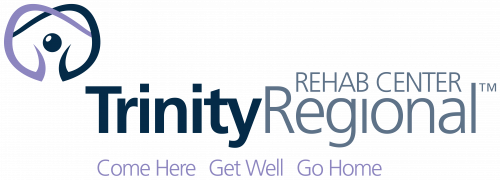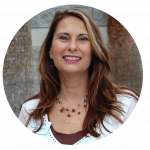Skilled nursing facilities (SNFs) have turned to telemedicine in record numbers to improve resident care and adapt to pandemic-related staffing and safety challenges. The positive impact and the untapped potential leave SNF leaders no longer wondering “if” but instead, “who?” Are some services better than others? Which program will be easiest for my staff? And, given the multitude of telemedicine options, what traits drive long-term success?

Trinity Regional Rehab Center, a 120-bed facility located in the Tampa Bay area, embraced telemedicine early on to support their night-shift nurses. We recently had the opportunity to speak with their Executive Director, Kendra Mulloy; Director of Nursing, Heather Flavin; and Erika Wilkins, Director of Managed Care, ARK Post-Acute Network, about their experience. As other SNF leaders compare and contrast solutions, this short conversation provides significant insights for decision-makers not satisfied with their current program or preparing to launch one.
Sound Physicians: It’s great to talk with you all. Could we start by asking what challenges you were trying to solve when you partnered with Sound Physicians?

Erika: Trinity had been getting after-hours telemedicine support from a local hospital, and it had been going pretty well. But then the hospital canceled the program abruptly — right before the holidays. So, the facility had an immediate need to find a new telemedicine partner. What attracted us to Sound’s TeleSNF program initially was that they could get us up and running so quickly. The service also covered more hours than our previous program and Sound staffs their program with hospitalist physicians.
SP: Launching a new program during the holiday season while you, like other nursing homes, were rolling out the COVID vaccine sounds incredibly challenging. How did it go?

Heather: Yes, you could say it was a busy time. Fortunately, our nurses already understood how to use telemedicine, as Erika mentioned. But still, launching any new program can be difficult, and we had a lot going on in our building. The Sound implementation team made the process as quick and seamless as possible. Our kick-off call took place on December 18, and we launched the service in three weeks. It was really impressive how fast the process went – especially during the holidays. It was a great collaboration with Sound Physicians and a team effort for sure.
SP: You’ve been partnering with Sound Physicians for several months now. How would you say the program is going?

Kendra: Things have been going great. I would say it’s not just about using telemedicine, but it’s about finding the “right” telemedicine program. Our nurses have on-demand access to tele-hospitalists from 5 pm to 8 am during the week and 24 hours a day on weekends and holidays. In the first ninety days, we used the service over one hundred times, and Sound’s doctors are helping with a range of conditions – many non-emergent, but some emergent situations as well. In the same three-month period, Sound treated seventeen patients with emergent conditions, with sixteen receiving all necessary care here in the building. In the one case where the resident had to go back to the hospital for treatment, the tele-hospitalist managed the transfer, and the patient came back to our facility without a hospital readmission. That’s very exciting for us –treating patients in place whenever possible is better for the residents and less traumatic for their families.
SP: 17 Emergent conditions treated without a hospital readmission. That’s exciting data. How is data influencing your program?

Erika: The data and reports Sound provides are another game-changer for Trinity. The staff has access to a dashboard that details each night’s encounters, including which nurses are using the system and what types of conditions the tele-providers are seeing. We get monthly reports and insights from Sound about opportunities to treat in place that we have missed. We didn’t have anything like this with our previous telemedicine provider. The tele-hospitalists also document all their encounters directly into our EMR. Now we are making data-driven decisions and implementing changes to our night-shift processes based on feedback from Sound. That is very exciting.
SP: We keep hearing about post-acute and long-term care staffing challenges. Florida has been particularly hard hit. Is telemedicine playing a role in your staffing strategy?

Heather: Actually, I feel telemedicine has been a big morale booster for our night-shift nurses. Whatever we can do to give our staff more support and improve retention, we want to do that. Our nurses do this work because of the residents. They care deeply. So, to have new and faster ways to provide care and a doctor they can reach out to at any time, that’s a big deal. The past year was really tough. Treating residents in place when something comes up and not sending the patient back to the hospital is safer for the residents and empowers our nurses. We love that our Sound doctors are here for us right away when we need them.
SP: Thanks to each of you for sharing your thoughts today. Any last thoughts?

Kendra: We’ve talked a lot about the user experience and program benefits, but I’d like to emphasize that technology alone isn’t the answer. Sound’s platform is very effective, but most importantly, it quickly and consistently connects us to engaged physicians which translates to better resident care. Technology can enable us, but at the end of the day, the best care is about working with the right people.
Now a lynchpin in clinical strategy for many SNFs, telemedicine, is here to stay. Skilled nursing facility leaders adopt telemedicine for enhanced resident care, operational improvements, and staff support leading to improved retention. Choosing the right telemedicine partner to seamlessly increase a community’s clinical capacity will be one of the keys to their future success. If you are interested in learning more about Sound Physicians’ TeleSNF program for skilled nursing facilities, you can read more here.
